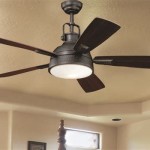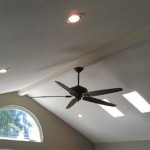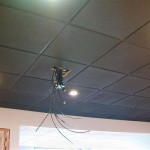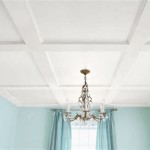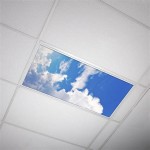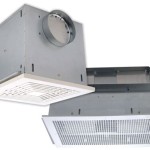Getting The Most Out Of Your Garage Ceiling Fans: A 2024 Winter Guide
Garage ceiling fans are often overlooked as a mere summer cooling solution, but their utility extends far beyond simply circulating air in warmer months. Many considerations, prompted by discussions on platforms like Reddit in 2024, highlight the potential for maximizing the benefits of garage ceiling fans during the winter season. Optimizing fan usage in colder months can lead to improved energy efficiency, reduced condensation, and a more comfortable workspace. This article explores the key aspects of effectively utilizing garage ceiling fans during winter, drawing from user experiences and expert recommendations commonly shared online.
Understanding the basic physics of heat and air movement is crucial for setting up and utilizing garage ceiling fans effectively. Warm air naturally rises, creating a temperature gradient within the garage. This means the air near the ceiling is typically warmer than the air near the floor. Without proper air circulation, this warm air remains trapped near the ceiling, providing little to no benefit to occupants or temperature-sensitive items stored at lower levels. A ceiling fan, when used correctly, can help to redistribute this warm air, creating a more even temperature throughout the garage.
In winter, the crucial element of ceiling fan operation is the reverse direction function. Most modern ceiling fans are equipped with a switch that allows users to change the direction of the blades. In summer, the fan blades should rotate counter-clockwise (as viewed from below), creating a downward airflow that generates a cooling breeze. However, in winter, the blades should rotate clockwise (as viewed from below). This upward airflow pulls the cooler air near the floor upwards, displacing the warmer air trapped at the ceiling and gently pushing it down the walls and across the floor. This process is often referred to as destratification, meaning the mixing of air layers to reduce temperature differences. The key is gentle air movement, not a strong breeze.
Optimizing Fan Speed for Winter Performance
Selecting the appropriate fan speed is critical for achieving optimal heating benefits. Generally, a low or medium speed is recommended for winter operation. The goal is to gently circulate the air without creating a noticeable draft. A high fan speed can disrupt the natural convection process and actually make the garage feel colder by creating wind chill. Experimentation is often necessary to determine the ideal speed for a particular garage and its insulation level. User reviews on Reddit often suggest starting with the lowest setting and gradually increasing the speed until a more even temperature distribution is noticed, without a perceptible breeze.
The effectiveness of low-speed operation stems from the principle of air stratification. Heat rises, creating distinct layers of air with varying temperatures. A slow-moving fan gently disrupts these layers, mixing the warmer air at the ceiling with the cooler air at the floor. This results in a more uniform temperature profile throughout the garage space. A high-speed fan, on the other hand, can aggressively mix these layers, potentially causing the warmer air to cool down more rapidly as it comes into contact with the cooler air at the lower levels. This can negate the benefits of destratification and, in some cases, even contribute to a colder feeling overall.
Furthermore, the size of the garage plays a significant role in determining the optimal fan speed. Smaller garages may only require the lowest setting to achieve adequate air circulation, whereas larger garages may benefit from a slightly higher speed. The key is to monitor the temperature distribution at different levels and adjust the fan speed accordingly. Investing in a simple thermometer for both the floor and ceiling can help to objectively assess the fan's performance and fine-tune the settings for maximum effectiveness.
Addressing Condensation and Moisture Issues
Winter conditions often lead to increased humidity levels within garages, primarily due to melting snow and ice tracked in by vehicles and footwear. This elevated humidity can result in condensation forming on surfaces such as walls, windows, and tools, which can ultimately lead to mold growth and corrosion. A garage ceiling fan can help to mitigate these moisture-related problems by promoting air circulation and reducing stagnant air pockets where condensation is most likely to occur.
By continuously moving the air around the garage, a ceiling fan helps to prevent moisture from accumulating on surfaces. The gentle airflow encourages evaporation, which in turn reduces the likelihood of condensation forming. This is particularly beneficial in areas where humidity levels are naturally high or where the garage is poorly ventilated. Proper ventilation, in conjunction with ceiling fan use, helps to remove moisture-laden air from the garage and replace it with drier air, further reducing the risk of condensation and its associated problems.
It's important to note that a ceiling fan is not a substitute for proper insulation. If the garage is not adequately insulated, the temperature difference between the inside and outside can be significant, leading to excessive condensation even with a fan running. In such cases, improving the insulation of the garage walls, ceiling, and doors should be prioritized to minimize temperature fluctuations and reduce the overall humidity level. Combining insulation improvements with ceiling fan usage will provide the most effective solution for managing moisture and preventing condensation during the winter months.
Enhancing Comfort and Energy Efficiency
Beyond preventing condensation, a garage ceiling fan can contribute to a more comfortable and energy-efficient environment. By redistributing warm air, the fan can reduce the need for supplemental heating, such as space heaters. This can lead to significant energy savings, especially in larger garages where heating costs can be substantial. The more even temperature distribution also creates a more comfortable workspace, allowing individuals to spend more time in the garage without feeling uncomfortably cold.
The principle behind energy savings lies in the reduction of heat loss. When warm air is trapped near the ceiling, it is more easily lost through the roof or poorly insulated areas. By circulating this warm air, the fan ensures that the heat is more evenly distributed throughout the space, reducing the temperature gradient between the ceiling and the floor. This, in turn, minimizes heat loss and allows the heating system to operate more efficiently. The result is a more comfortable garage environment with lower energy bills.
Furthermore, a ceiling fan can also help to improve the efficiency of existing heating systems. By circulating the warm air generated by a heater, the fan ensures that the heat is distributed evenly throughout the garage, preventing hot spots near the heater and cold spots in other areas. This allows the heater to maintain a consistent temperature with less energy consumption. Many Redditors in 2024 share experiences of reduced reliance on space heaters after properly implementing ceiling fan usage during winter, resulting in noticeable savings on their electricity bills.
In conclusion, garage ceiling fans, when utilized strategically during the winter season, offer a multifaceted approach to enhancing comfort, minimizing condensation, and improving energy efficiency. Understanding the principles of air circulation, optimizing fan speed, and pairing fan usage with proper insulation are key factors in maximizing these benefits. By adopting these practices, garage owners can transform their garages into more comfortable and functional spaces during the colder months while simultaneously reducing energy consumption and protecting their belongings from moisture damage.

Parrot Uncle 60 In Indoor Integrated Led Black Dimmable Ceiling Fan With Light Remote Control And 6 Sd Dc Motor F8310bk110v

Parrot Uncle 60 In Indoor Color Changing Integrated Led Matte Black Ceiling Fan With Light And Remote Control F8310110v The Home Depot

Parrot Uncle 60 In Indoor Integrated Led Black Dimmable Ceiling Fan With Light Remote Control And 6 Sd Dc Motor F8310bk110v

The Minka Aire Barn Ceiling Fan A Tested Review

Everything You Need To Know About Outdoor Ceiling Fans Dan S Fan City Parts Accessories

The 1 Reason Power Attic Ventilators Don T Help Energy Vanguard

Best Outdoor Ceiling Fan Top 10 Fans 2024

Honeywell Glen Alden 52 In Oil Rubbed Broe With Cimmeron Ironwood Blades Led Indoor Flush Mount Ceiling Fan Light 5 Blade 50517 26 At Com

Fanimation Studio Collection Aire Drop 52 In Brushed Nickel With Dark Walnut Gray Blades Integrated Led Indoor Ceiling Fan Light And Remote 5 Blade Lp8068lbn At Com

Harbor Breeze Echo Lake 52 In White Led Indoor Outdoor Ceiling Fan With Light 5 Blade 42081
Related Posts

